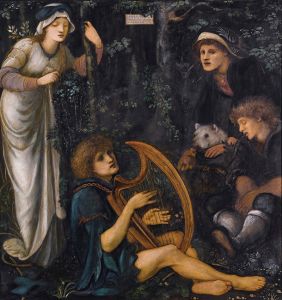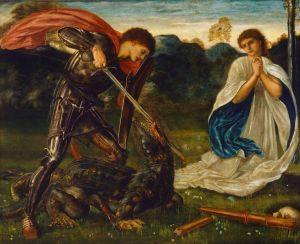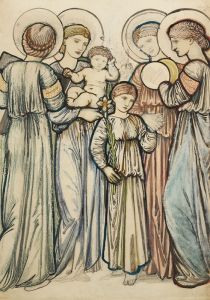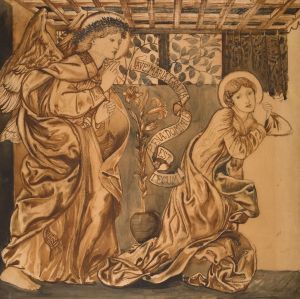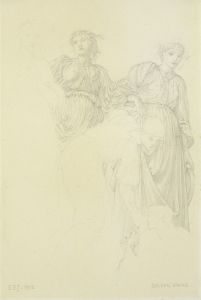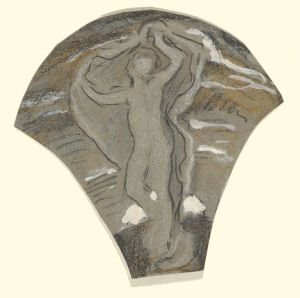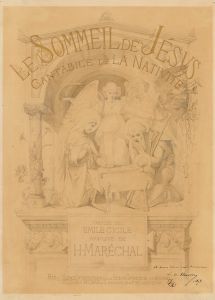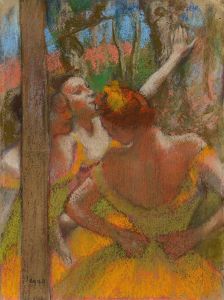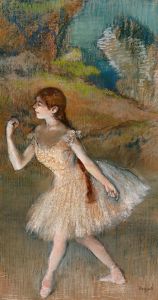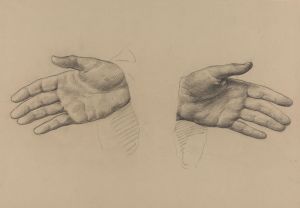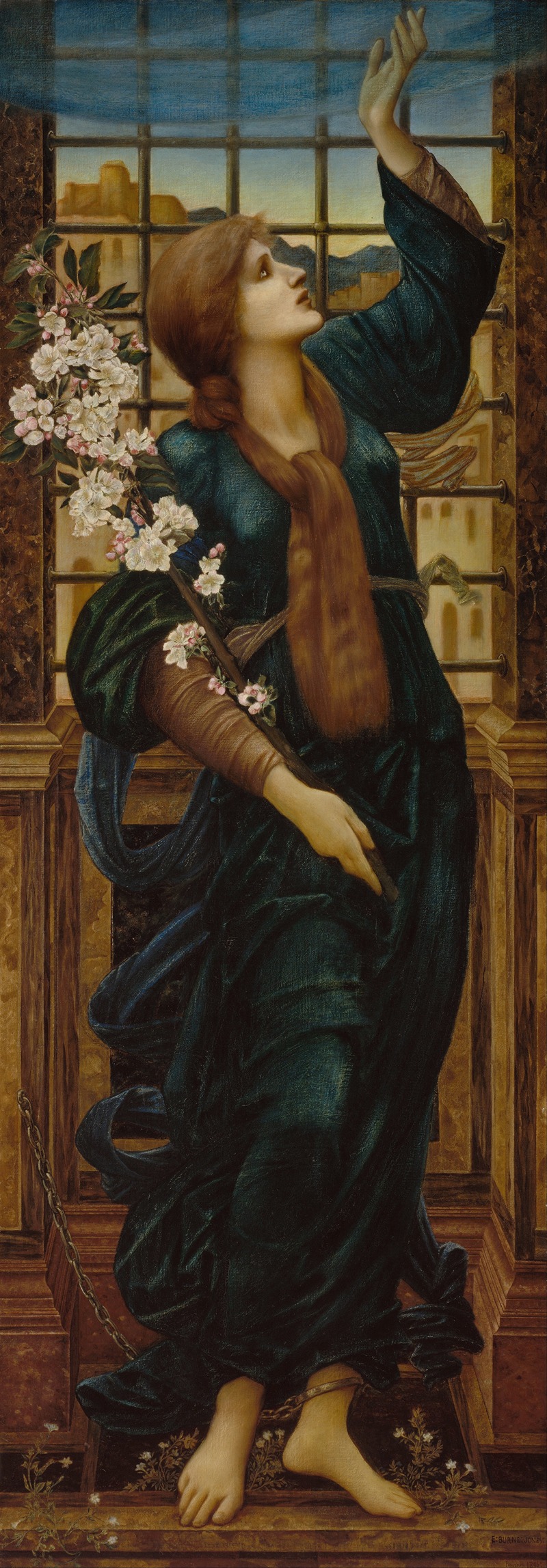
Hope
A hand-painted replica of Sir Edward Coley Burne-Jones’s masterpiece Hope, meticulously crafted by professional artists to capture the true essence of the original. Each piece is created with museum-quality canvas and rare mineral pigments, carefully painted by experienced artists with delicate brushstrokes and rich, layered colors to perfectly recreate the texture of the original artwork. Unlike machine-printed reproductions, this hand-painted version brings the painting to life, infused with the artist’s emotions and skill in every stroke. Whether for personal collection or home decoration, it instantly elevates the artistic atmosphere of any space.
"Hope" is a painting by the British artist Sir Edward Coley Burne-Jones, completed in 1896. Burne-Jones was a prominent figure in the Pre-Raphaelite Brotherhood, a group of English painters, poets, and art critics founded in 1848. The Brotherhood sought to return to the detail, intense colors, and complex compositions of Quattrocento Italian art.
The painting "Hope" is part of a series of works by Burne-Jones that explore allegorical themes, often drawing on classical mythology, literature, and religious subjects. This particular work is notable for its depiction of the allegorical figure of Hope, a common theme in art and literature, symbolizing optimism and the expectation of positive outcomes despite adversity.
In "Hope," Burne-Jones presents the figure of Hope as a serene and contemplative woman, standing barefoot on a globe. She is blindfolded, which is a traditional representation of hope's reliance on faith rather than sight. The figure is dressed in flowing robes, typical of Burne-Jones's style, which often featured elongated figures and drapery reminiscent of medieval and early Renaissance art.
The painting is characterized by its muted color palette, with soft blues, greens, and earth tones, which contribute to the overall ethereal and dreamlike quality of the work. Burne-Jones's meticulous attention to detail is evident in the delicate rendering of the figure's features and the intricate patterns of her clothing. The background is minimalistic, focusing the viewer's attention on the central figure and enhancing the painting's symbolic message.
"Hope" was created during a period when Burne-Jones was at the height of his artistic career. By the late 19th century, he had achieved significant recognition and was considered one of the leading artists of his time. His works were celebrated for their beauty, technical skill, and the ability to convey complex emotional and intellectual themes.
The painting is housed in the collection of the Museum of Fine Arts, Boston. It was acquired by the museum in 1909, reflecting the international appreciation of Burne-Jones's work. The acquisition of "Hope" and other works by Burne-Jones by American collectors and institutions underscores the transatlantic influence of the Pre-Raphaelite movement.
Burne-Jones's "Hope" continues to be admired for its artistic merit and its embodiment of the ideals of the Pre-Raphaelite Brotherhood. The painting is often discussed in the context of Burne-Jones's broader oeuvre, which includes a wide range of paintings, stained glass, and decorative arts. His work has had a lasting impact on the development of British art and continues to be studied and appreciated by art historians and enthusiasts around the world.
In summary, "Hope" by Sir Edward Coley Burne-Jones is a significant work of art that exemplifies the Pre-Raphaelite style and its thematic focus on allegory and beauty. The painting's serene depiction of the figure of Hope, combined with its technical excellence, ensures its place as a cherished piece within the canon of 19th-century British art.






